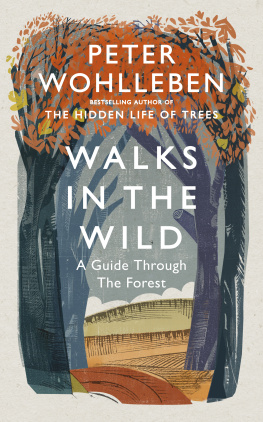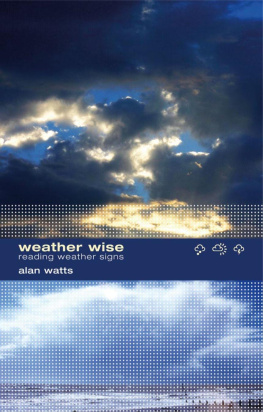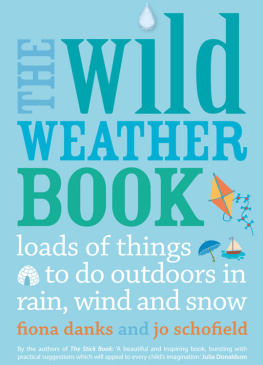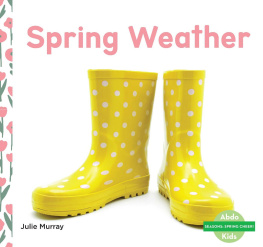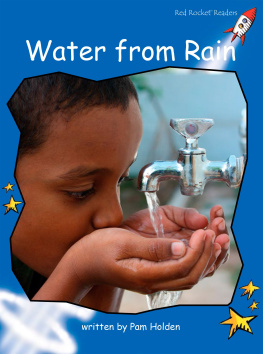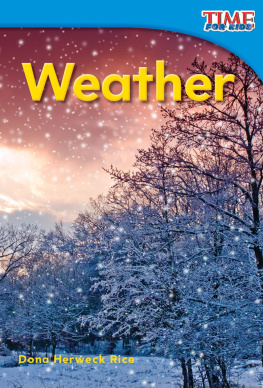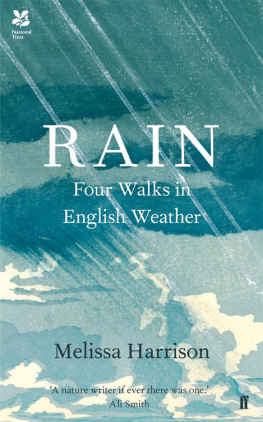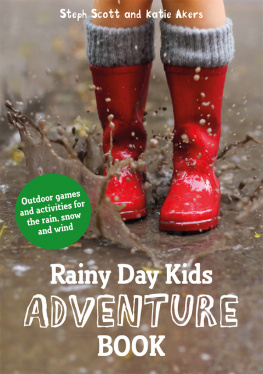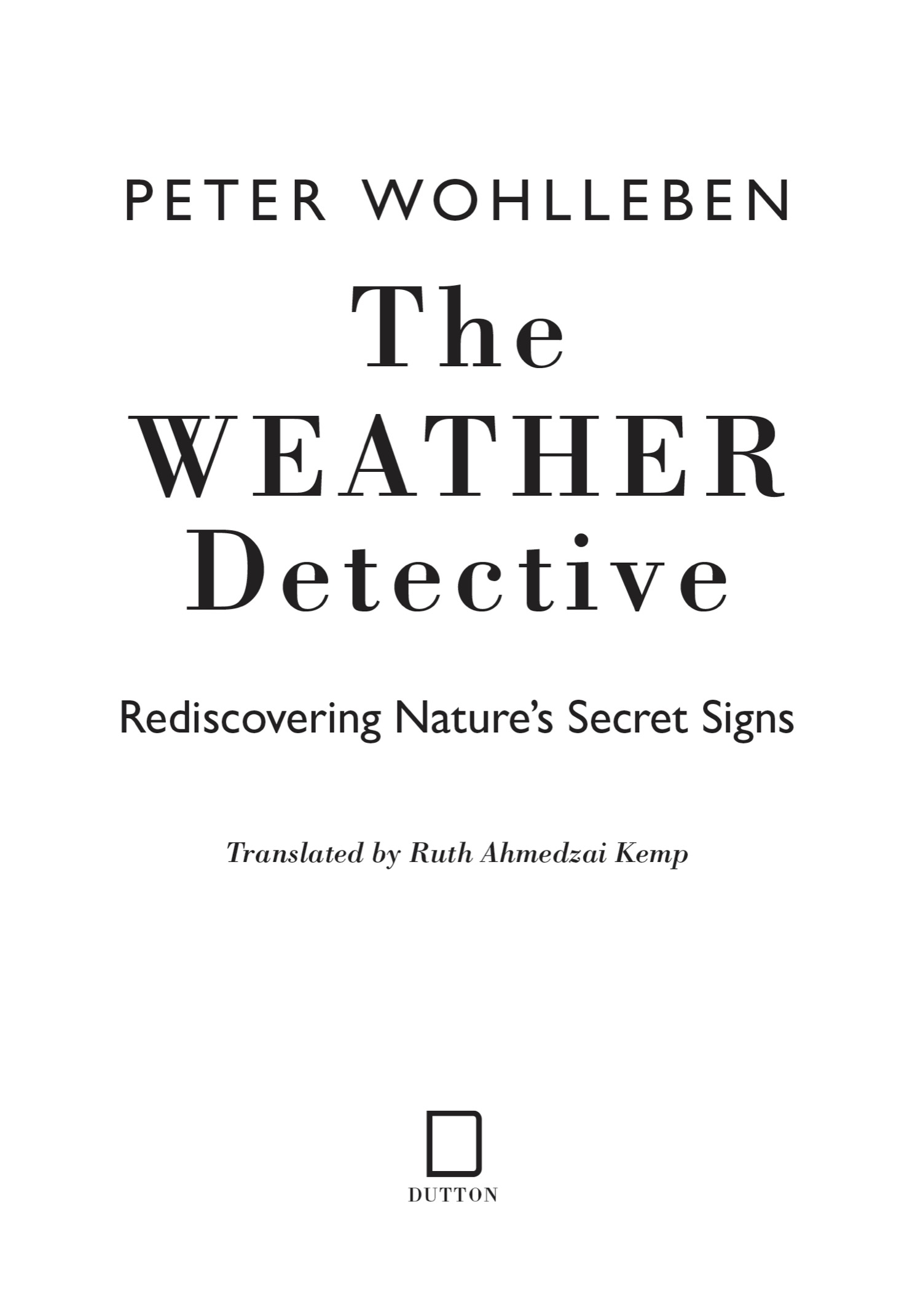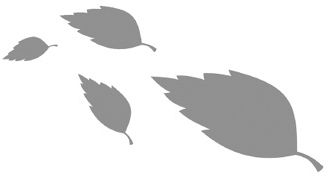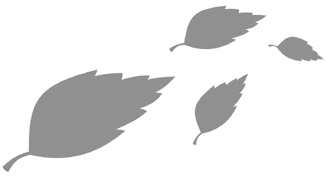Penguin supports copyright. Copyright fuels creativity, encourages diverse voices, promotes free speech, and creates a vibrant culture. Thank you for buying an authorized edition of this book and for complying with copyright laws by not reproducing, scanning, or distributing any part of it in any form without permission. You are supporting writers and allowing Penguin to continue to publish books for every reader.
DUTTON and the D colophon are registered trademarks of Penguin Random House LLC.
While the author has made every effort to provide accurate telephone numbers, Internet addresses, and other contact information at the time of publication, neither the publisher nor the author assumes any responsibility for errors or for changes that occur after publication. Further, the publisher does not have any control over and does not assume any responsibility for author or third-party websites or their content.
INTRODUCTION:
On Natures Trail
T HE moment we step out of the door and stroll through the garden or a nearby park, we are surrounded by nature. Thousands of processes, from the minute to the gargantuan, are unfolding all around us, and they are fascinating and beautiful to beholdif only we open up our senses and take notice of them.
In the past, it was vital that everyone could recognize and interpret these signs. People were dependent on nature and intimately familiar with it. Nowadays, fully stocked supermarket shelves, constant energy supplies, and measures in place to ensure us against any conceivable act of nature all trick us into thinking that we no longer rely on our ancient bond with the natural world. Our distance from nature is particularly obvious during hot, dry summers. While farmers and foresters are desperate for rain, most of the urban population is delighted to hear forecasts predicting ongoing dry weather, oblivious to the impact of a prolonged drought. And yet, in the face of climate change and damage to the environment, it is more urgent than ever that we recognize and understand the signs of nature. Only then will we appreciate what we stand to lose.
Television, radio, and the internet all make gazing out of the window to find out what the weather is like rather redundant. We have countless specialized services at our fingertips to let us know what is going on outside in the garden. There are regular updates for everything we could possibly imagine wanting to know aboutfrom whether were faced with rain or shine, to when birds will migrate or aphids hatchand such information is readily available for anyone interested to look it up. If you want even more precise prognostic data, you can simply install an electronic weather station outside that sends a live feed to you in the comfort of your living room.
But if you enjoy gardening and spending time in nature, you can manage perfectly well without these bulletins updating you constantly about the weather. We can glean most of the same information from clues around the garden, from the animals and plants in our local area; in fact, even from the inanimate environment. Whether its forecasting whats ahead or assessing current weather events, whether its insect infestations or when its safe to say a season has started or ended, you can read all of this data from your garden much more accurately than any newsreader from a teleprompter. There can be a huge difference, after all, between your garden and another location just a few miles away in terms of how a natural event unfolds and the impact it has. And that is ultimately why we look to media forecasts: to assess the situation on our doorstep.
This guide will help you to decipher the vast quantities of information you can glean from your local environment and especially your garden. You can become your own nature expert. It will address many everyday questions that in the future youll be able to answer for yourself; and many phenomena will suddenly be easier to understand when you know the background.
The most important motivation for writing this book was the prospect of encouraging more people to take pleasure in time spent outdoors and relaxing outside. How wonderful it is to experience things consciously that you had until now passed by obliviously. How exciting it is to foresee changes in the weather, and in flora and fauna, before they happen. When we are out and about, experiencing our surroundings with all our senses, nature is closer to us than ever before. And the ancient bond between us and our environment can be renewed.
WHAT WILL THE WEATHER BE LIKE?
E VERY TV or radio news bulletin is always followed by the weather report, and it is often better than its reputed to be. Forecasts of up to a week in advance are about 70 percent likely to be true, while there is a 90 percent success rate for those covering twenty-four hours ahead. Looking at it the other way, this means every tenth weather forecast misses the mark. The reason for this is chaotic weather conditions that simply cannot be predicted. I find it very irritating that presenters never admit to this with a statement like, Because of the current situation, todays data is very uncertain. You simply never hear that. Nevertheless, it cant hurt to look outside and to read the signs for yourself if you wish to check what the clouds are up to. Over the years, you stand to develop a strong sense of what is going to unfold in the next few hours.
Cloud towers and rosy sunsets
The evening sun is a much-loved prophet. If it sets with a warm, rosy glow, it is taken as a sign of sunshine the following morning, as in the rhyme, Red sky at night: shepherds delight. This happens because the sunbeams stream in low through the atmosphere from the clear skies in the west and light up the clouds slowly drifting off to the east. And since, in western Europe, the weather usually comes from the west, a broadly cloudless western horizon means clear skies for the following few hours.



